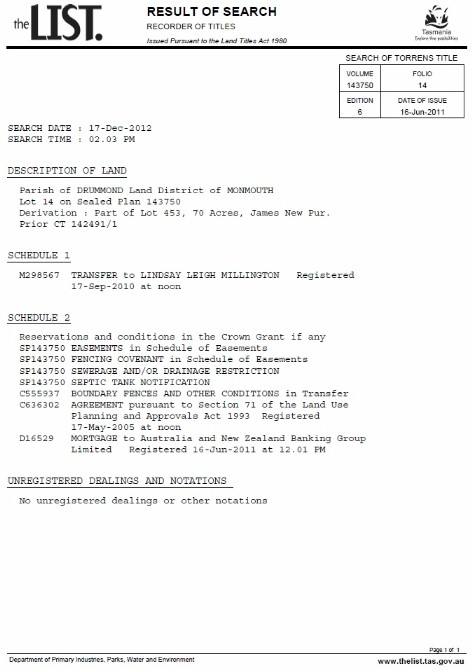TasWater
TasWater: who are they and what is their role in the Development process.
TasWater is owned by the local Councils in Tasmania and are responsible for all the Water Supplys, reticulation and storage, together with all the Sewerage reticulation and treatment within Tasmania.
On lodgement of an Application to develop, Council will automatically forward the application to TasWater for their advice and assessment.
TasWater will, as a matter of policy, ask for a Detail Plan showing the existing services, the exact location of propertry water and sewer locations at the site address, ensuring that properties involved have legal access to the connection points. Pipeline and Service Easements must be proposed over these assets to TasWater's benifit.
Note that Boundaries are not defined as a matter of course with a Detail or Contour Survey.
Boundaries to a greater accuracy than compiled off existing data are entirely possible but require an additional instruction
TasWater will also require an indicative report by a Consulting Engineer (or may be persaded to accept a sketch plan by 'others, such as plumbers, contractors etc' that gives them the information they require) indicating the proposed services design and locations of same. This is required upon lodging the Proposal with Council or will form part of an RFI (Request for Further Information) that will immediately issue from TasWater upon Proposal lodging. If proposed services are within 2.00 metres of existing house footings further plans and cross-sections will be required.
The good news is that you will need this engineering information anyway to comply with anticipated Permit conditions, it is just that it is needed now to show the development will work.
Advice from TasWater: Tas Water will accept the equivalent of a minimum 4.00 wide easement over the 0525mm
Concrete sewer mains with the pipe located centrally— meaning that the easement will most likely be a
variable width.
The minimum easement width for a water main is 4.00 wide.
Read also Subdivsion Overview Section D
Service Locations
Please note that the developer is responsible for arranging to locate the existing TasWater
infrastructure and clearly showing it on the drawings. Existing TasWater infrastructure may be
located by a surveyor and/or a private contractor engaged at the developers cost to locate the
infrastructure.
A copy of the GIS is included in email with this notice and should aid in updating of the
documentation. The location of this infrastructure as shown on the GIS is indicative only.
• A permit is required to work within TasWater's easements or in the vicinity of its infrastructure.
Further information can be obtained from TasWater
• TasWater has listed a number of service providers who can provide asset detection and location
services should you require it. Visit www.taswater.com.au/Development/Service-location for a list of
companies
• TasWater will locate residential water stop taps free of charge
• Sewer drainage plans or Inspection Openings (10) for residential properties are available from your
local council.
To view our assets, all you need to do is follow these steps:
1) Open up webpage - http://maps.thelist.tas.gov.au/listmap/appilistimap
2) Click 'Layers'
3) Click 'Add Layer'
4) Scroll down to 'Infrastructure and Utilities' in the Manage Layers window, then add the
appropriate layers.
5) Search for property
6) Click on the asset to reveal its properties
TASWATER AND REMOVAL OF HEADWORKS CHARGES:
Historically Permits may have been issued with the requirement for the Payment of Headworks charges. From time to time governments issue a moritorium in relation to these headworks charges. Yet we still have a Permit with the requirement imbedded in it. These Permit conditions need to be amended or remvoved by a Sec 56 Minor Amendment request made to coundil and ratified by TasWater
Prior to the issue of TasWater’s Consent to Register a Legal Document, (that is, prior to TasWater allowing a survey plan to be Sealed by Council and sent off for new titles) the following must first be addressed:
Permit conditions relating to Headwork
"In this instance TasWater would agree to remove headwork charges without any requirement for works external. To action this, the developer/developer’s agent would need to make an application to Council for a s56 (LUPAA) for a minor amendment to the permit to have the TasWater permit conditions relating to Headworks charges removed on the grounds that TasWater’s developer charges policy has changed since the permit was issued and the developer would like TasWater to amend their Submission to reflect their current policy. Council will then refer the s56 minor amendment application to TasWater and an amended Submission with Headworks conditions removed will be issued to Council for inclusion in an amended permit. No TasWater fee applies to this amendment process."


